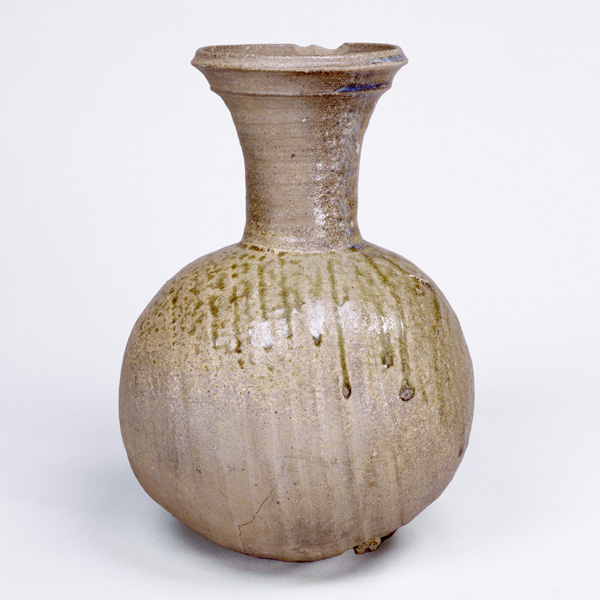The Development of Sue Pottery
-

Long-Necked Jar, Found at the Yamanoue Tumulus, Fukushima, Kofun period, 7th century
Japanese Archaeology and Special Exhibition (Heiseikan) Japanese Archaeology Gallery
June 27, 2023 (Tue) - December 10, 2023 (Sun)This technique originated in China’s gray pottery and was later introduced from Korea to Japan, where local production began in the 5th century.
At the Suemura site in present-day Osaka in particular, many kilns were in operation until the Heian period (794–1192). From the late 5th century, sue ware kilns were built in various regions of Japan, and the pottery they produced was also placed in burial mounds with the deceased. Even after the Nara and Heian periods, sue ware was used at temples and government offices. The techniques for making it were later used to create new types of pottery.
| Designation | Name | Creation/ Excavation/ Provenance |
Period | Acquisition/ Ownership/ Accession Number |
CMT | ||
| Highlight | Short-Necked Jar with Lugs | Found at the Daishōgun'yama Tumulus, Nagasaki | Kofun period, 4th–5th century | J-37006-8 | |||
| Highlight | Long-Necked Jar | Found at the Yamanoue Tumulus, Fukushima | Kofun period, 7th century | J-36929-12-2 |
